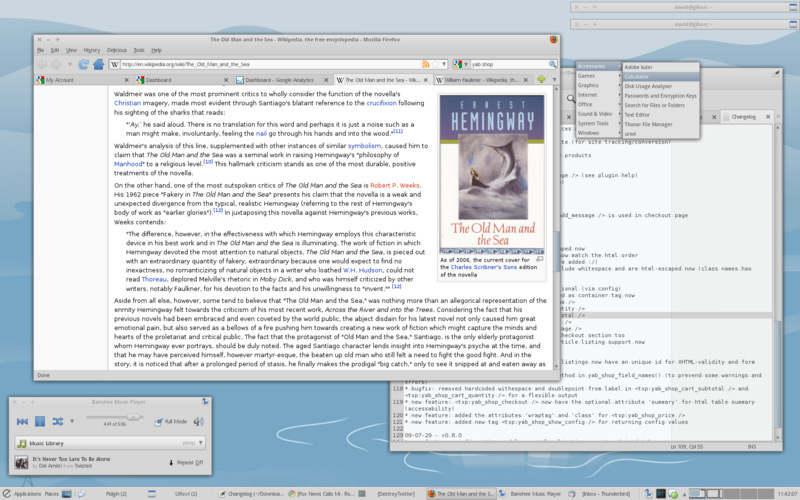8 Linux Desktop Environments You Probably Don’t Know
Unlike Windows and Mac OS, Linux offers a variety of desktop environments for its users. Each desktop environment (interface) has its own appearance, style, and features, and a user can install any one of these desktop environments based on their requirements. Some of these desktop environments are also suited for machines with low hardware configurations.
If you’re unsure which Linux desktop environment is the most suitable for you, then don’t worry. We’ve put together 10 Linux desktop environments along with their features to assist you in selecting the best one for your needs.
Read Also: 10 Most Asked Questions About Linux
More on Hongkiat.com:
- Turn generic English into Linux terminal commands
- 9 Linux commands & codes to be wary of
- Elementary OS Luna works like OS X
- 4 tips to make Elementary OS Luna more ‘Elementary’
- Operating Systems you may not have heard of (but should)
Cinnamon
Cinnamon is based on Gnome library files and designed for Linux Mint. It is an easy-to-use, powerful desktop environment that is flexible and combines the traditional layout with advanced features.
Cinnamon consists of 3 main things: a single panel at the bottom, a clock and system tray and various other things on the right, and the application menu on the left side of the screen. You can also customize the application menu by adding applications of your choice. To ensure that this runs smoothly, your machine should have a powerful graphics card and updated drivers.

GNOME 3.x
A few years back, GNOME (GNU Network Object Model Environment) was the most popular and widely used Linux desktop environment. The transition of GNOME to GNOME 2.x series brought simplicity and ease of use that attracted many Linux users to move to the GNOME 2.x series.
GNOME 3.x was introduced to provide easy access to all of your data by integrating it with online accounts. Some other important features offered by GNOME 3.x are Activities Overview, side-by-side windows to view several documents, and an easy way to deal with notifications comfortably.

KDE
KDE (K Desktop Environment) is one of the most popular Linux Desktop environments and also a contender for GNOME. It resembles the Windows Desktop, so if you want to experience a desktop similar to Windows OS, this is the option for you. While KDE comes with a visually intriguing GUI and powerful features, the combo makes it a resource-hungry desktop environment.
This means you may not be able to run it smoothly on older desktop/laptop computers with low hardware configurations.

MATE
Despite its popularity with earlier versions, the simplistic design of GNOME 3 didn’t sit too well with many GNOME users. The Linux community decided to continue the development of GNOME 2, and designers came up with MATE. MATE offers a GNOME 2 environment with new features and improvements to assure users of an improved computing experience.

LXDE
LXDE (Lightweight X11 Desktop Environment) is a fast-performing desktop environment. It’s designed for cloud systems that usually have low hardware configurations (less CPU power and less RAM) and older desktop/laptop systems.
Although it is a lightweight desktop environment, it still has a simple and attractive user interface. It also provides multi-language support, and on top of that, it supports standard keyboard shortcuts and allows tabbed file browsing, among other things.

Xfce
Fact: the abbreviation for Xfce doesn’t stand for anything. It’s a traditional desktop environment which is very lightweight but in terms of functions, it is similar to GNOME 2. Xfce has its own lightweight programs as well as some GNOME programs to provide a balance in between performance and functions.

Openbox
Openbox is a desktop environment which is lighter than LXDE and Xfce due to its minimalistic design and appearance. It is a highly configurable desktop environment with a bare desktop, making the loading process fast. Right-click anywhere on the desktop to open the application menu.
You can also combine the functionality of GNOME or KDE with the speed of Openbox to make your desktop faster and cleaner. Openbox is ideal for Linux users with low power systems.

Xmonad
Xmonad is actually a tiling window manager, which means instead of overlapping windows on your desktop, it will automatically arrange them in a non-overlapping order, leaving behind an organized desktop. It does not come with too much of a decorated user interface, which makes it a fast, user-friendly and stable desktop environment.
